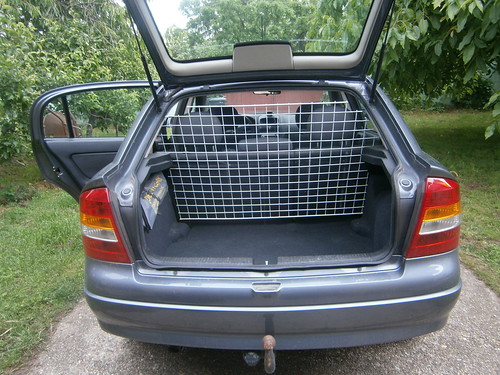|
http://www.artbusiness.com/osopprot.html
|
How to Show Your Art at Galleries...
and Make the Most of Your Openings
|
Hogyan rendezd meg kiállításodat, és hogyan hozhatod ki a legtöbbet a megnyitóból
|
|
Articles and content copyright Alan Bamberger 1998-2011. All rights reserved.
|
|
Q: How do I show my art to my best advantage? I have an art show and opening coming up at a gallery. I've had gallery shows before, but this one is more important. I want everything to go as well as it possibly can.
|
Kérdés:
Miként tudom a műveimet a legkedvezőbben bemutatni? Megnyitóval összekötött kiállításom lesz egy galériában. Voltak már kiállításaim, de ez sokkal fontosabb lesz. Szeretném, ha minden a lehető legjobban működne.
|
|
A: Every art show opening marks a milestone in your career as an artist. It's a premier, a beginning, a critical instant of opportunity. It may only last a few hours, but it's like everything you've ever worked for and accomplished microcosmically concentrated into a one shot whack at forging your destiny. Why? Because anything can happen-- and it often does-- which means you gotta be there, be on and be ready.
|
Válaszok:
Minden kiállítás-megnyitó mérföldkő a művész pályáján. Bemutató, új korszak kezdete, óriási lehetőség. Bár csak pár órányi idő, mégis ötvözi és összekovácsolja az eddigi munkádat és további lehetőségeidet. Mivel minden megtörténhet – és gyakran meg is történik – amiért idejöttél, amiért itt vagy és amire felkészültél.
|
|
Your art never looks as good as it does at your opening. It's pristine, perfect, and at the threshold of a new beginning. Everyone is optimistic about prospects for favorable reactions, healthy sales and great reviews. But the most important ingredient is you, and the more aware you are of the implications of the impending onslaught, the better the chances to upwardly alter the course of your success.
|
Műveid soha sem mutatnak annyira jól, mint egy megnyitón. Tiszták, tökéletesek, új korszakot nyitnak. Mindenki bízik a kedvező fogadtatásban, sikeres eladásokban és hatalmas sajtóvisszhangban. Ennek a legfontosabb eleme te magad vagy, és mennél jobban föl vagy készülve a várható „csapásokra”, annál jobban tudod kihasználni a fölkínálkozó lehetőségeket.
|
|
I'm amazed at how many artists completely disregard their openings. They spend weeks, months or years creating the art, but not ten minutes reflecting on how they'll present themselves at its public debut. They show up, stand around, smile, chit chat, schmooze with friends, sip wine, shake hands, respond, react, go home and forget about it. What don't they do? Prepare with purpose.
|
Csodálkozom azon, milyen sok művész szarik bele a megnyitóba. Hetekig, hónapokig vagy évekig tart az alkotás, de tíz percig sem készülnek fel a nyilvános megjelenésre. Odamennek, mosolyognak, pusmognak a barátaikkal, boroznak, pacsiznak, pár kérdésre felelnek, aztán hazamennek és elfelejtik az egészet. Miért? Mert nem készültek fel céltudatosan.
|
|
You can do better than that, much better, so in case there's an art opening in your future, maybe consider incorporating the following gambits into your repertoire. You'll be glad you did.
|
Ennél sokkal jobban meg tudod csinálni. Legközelebbi megnyitó előtt készülj fel, vedd be az alábbi tevékenységeket a műsorodba.
|
|
The number one rule of art opening protocol is to BE THERE from the opening bell to the closing clink. If you have to leave for any reason, tell whomever's in charge where you're going, how long you'll be gone and when you'll be back. This way, people who want to meet you know exactly how long they'll have to wait. You see, anyone can show up at anytime with any agenda, and your duty is to be available or accounted for 100% of that time. Better yet, unless it's an emergency, stick around. Remember, we're talking several hours at most, not days.
|
Első feladat a megnyitó forgatókönyvében, hogy OTT KELL LENNED a beharangozástól az épület bezárásáig. Ha mégis távoznod kéne, jelentsd be, hogy miért, hova és meddig, és azt is, hogy mikorra érsz vissza. Ekkor tudni fogják azok, akik beszélni szeretnének veled, hogy mennyit kell várniuk.
De azért tudjad, hogy most kell 100 %-osan rendelkezésre állni! Ne jöjjön közbe semmi! Csak vészhelyzetben menj el, vagy akkor se! Csak pár óráról van szó, nem napokról.
|
|
Now that you're there, make yourself available, especially to people you don't know. Don't hang with your friends, let one or two gasbags monopolize your time, or get cornered by some wannabe who talks tall but has no intention of buying. One of the most common mistakes artists make at their openings is spending way too much time with people who are least likely to buy their art. It's not easy to tell who's who at first, but the more art show experience you get, the easier it'll become to jettison the time wasters. As for those who already know and love you, you can bathe in the white light your sycophants anytime, so save that for later.
|
Ha már ott vagy, tedd magad nyitottá különösen az ismeretlenek számára. Ne a barátaiddal hömbölögjél; ne hagyd, hogy pár vén szatyor kisajátítson; ne hagyd, hogy elkerítsenek a helyi celebek, akik nagyon elegánsan társalognak, de eszükbe sem jut a vásárlás. Általában a kiállító művész túl sok időt pazarol olyanokra, akik nem is akarnak vásárolni a műveiből. Elsőre elég nehéz ezeket felismerni, de több megnyitó tapasztalata segít ezeknek az időrablóknak az elkerülésében. Bármikor lehet a régi ismerősök elismerésében lubickolni, őket is kerüld ilyenkor.
|
|
Keep the traffic moving; keep conversations simple and answers brief; keep the potential buyer pool as large as possible. Speak in everyday language that anyone can understand (if you need help with this, practice before the opening). Avoid telling people more than they want to hear; avoid answering questions in unintelligible insider art jargon gibberish. Best procedure is to answer all questions in thirty seconds or less (if you think that's too short, time yourself and see how much you can say in thirty seconds-- you'll be amazed). The longer your answers, the fewer people you'll have time to talk to. If someone wants to hear your life story, tell it later, after the show.
|
Mozogj állandóan, egyszerűen és röviden válaszolgass, lehetséges vevők körét semmivel se csökkentsed. Köznapi stílusban beszélj, hogy bárki megértsen (ha ez nehéz neked, készülj fel erre a megnyitó előtt). Ne mondj többet, mint amire kíváncsiak; ne használd a művészeti szakzsargont. Válaszod bármely kérdésre 3 másodpercnél ne legyen hosszabb. (Próbáld ki: mennyi mindent lehet 3 másodperc alatt elmondani. Csodálkozni fogsz!) Minél hosszabb a válaszod, annál kevesebb emberrel tudsz beszélni ugyanannyi idő alatt. Ha valaki az életrajzodat akarja megismerni, a megnyitó után mond el neki (valami hűvös kocsmában). (Télen egy jó meleg kocsmában.)
|
|
Pay attention to everyone you talk to; make sure they understand what you're saying. Speak at their level and don't act like you know much more about art than they do (even when you do). If you see they don't get it, slow down, back up, ask what they don't get, try a simpler approach or ask if they have questions. Most importantly, avoid the tendency to be argumentative or to correct anyone who misinterprets your art or sees it differently than you do.
|
Figyelj a beszélgetőtársadra. Győződj meg arról, hogy felfogta, amit mondasz. Szintjének megfelelően beszélj, és ne éreztessed vele, hogy a művészetről többet tudsz! Ha a válaszod láthatólag nem kielégítő, kérdezz vissza és vagy adj egyszerűbb választ. Ne vitatkozzál, ne okoskodjál, ha másként látja vagy értelmezi a művedet.
|
|
So here you are; the stampede is on. Everyone's looking good, wanting a piece of the action, to be part of "it," to rub elbows, get somewhere, be somebody, feel special, whatever. But you've got the wildcards too, people who come because they're curious, they've come with friends, they like parties, they're walking by and look in the window, they like crowds, they like to look at art without being noticed, and so on. It makes absolutely no difference whether they've heard of you or seen your art. Anybody can be a potential buyer. Anybody can decide for whatever reason or at any moment that they like your art enough to get serious. And in order to facilitate that seriousness to culminate in a sale, you've got to make the process of identifying with, connecting with and buying your art as easy as buying a quart of milk at the grocery store.
|
És akkor kezdődhet az előadás. Mindenki jól néz ki, várja az eseményt, sőt részese akar lenni. Tolongani akar, feltűnni, örülni, ilyesmi. És vannak köztük, akik csak jönni szoktak, vagy a barátaik hozzák, vagy szeretnek bulizni, csak erre jártak, ablakon át vették észre az eseményt, vagy szeretik a tömeget, vagy akik csak úgy általánosan szeretik a művészetet, és így tovább. Mindegy, hogy ismerik-e már a művészetedet vagy téged. Bármelyik potenciális vevő. Bármelyik pillanatban komolyan megszeretheti valamelyik művedet. Te feladatod, hogy a vágyát kielégítve eladjad neki – olyan természetességgel, ahogy egy doboz tejet adnak el a fűszeresek.
|
|
When you feel it's appropriate, walk up and briefly introduce yourself to anyone who's actively scoping your art, your resume, your statement or your price list for any length of time. That's all you have to do; introduce yourself-- no pressure, no nothing. A simple "hello" will do it. You can tell real fast whether they're interested in starting a conversation. If you get a cool reception, politely excuse yourself and move on. Remember, all kinds of people want to talk to you for all kinds of reasons, but many either don't know what you look like or are afraid to ask. Best procedure is to assume everyone's too shy to say hi and would much rather have you go first. When you guess right and deepen their connections to you and your art, you win buyers.
|
Ha valaki nagyon nézi a műveket, az életrajzot, a bemutatkozást vagy az árlistát, röviden mutatkozzál be neki. Csak egy bemutatkozás! Vagy üdvözlés. Észre fogod venni, ha beszélgetni akar. Ha hűvös a fogadtatás, udvariasan hagyd ott. Sokan vannak, akik bármi okból beszélnének veled, de azt se tudják, hogy nézel ki, vagy hogyan szólítsanak meg. Szégyenlősségüket legjobban egy ráköszönéssel lehet legyőzni, így te vagy a kezdeményező. Ha sikerül jó és reményteljes kapcsolatot kialakítani, máris lehet egy vásárlód.
|
|
Avoid stock answers. For example, when someone asks you to explain your art or asks a question about the meaning or significance of your art, don't tell them it means whatever they want it to mean. Guess what? They already know that. They wanna know what YOU think it means. Be responsive and considerate, no matter how uninformed their questions may be. Imagine yourself in their shoes. When you ask questions about stuff you don't understand to people who understand it really well, you sound uninformed too.
|
Kerüld a sablonos választ. Például: ha valaki felszólít, hogy fejtsd ki a mű mondanivalóját, vagy rákérdez a jelentésre vagy jelentőségre, ne mond azt, hogy azt jelenti, amit mondania kell. Feltehetőleg ezt már tudják. Határozottan a te mondandódra kíváncsiak. Légy érdeklődő és figyelmes, bármilyen tájékozatlan is a kérdező. Képzeld magad a helyébe. Ha számodra felfoghatatlan dolgokról kérdeznél valakit (aki ért hozzá), rendes választ fogsz kapni.
|
|
It's OK for people to like something they know little or nothing about, and when that something is your art, you're in luck. Tons of people who like art know little or nothing about it; some of them turn out to be buyers and some of them will hopefully buy yours. To increase the chances of that happening, have entry-level explanations and answers that keep them in the game. We all have to start somewhere, right?
|
Az teljesen rendben van, ha valakinek megtetszik valami, amiről keveset vagy semmit sem tud. És ha ez az izé a te műved, az nagy szerencse. Művészetkedvelők tömege tájékozatlan a részletekről, mégis lesz belőlük vásárló, jobb esetben a te vásárlód. Növeled az esélyed, ha közérthető magyarázatot vagy választ adsz. Mi mind így kezdtük.
|
|
You see, people spook easily around art. Sure, they love it and may well want to own it-- everybody does-- but as soon as they don't understand something or feel the least bit confused or uncomfortable, they run the other way. In order to increase the fan base and make the sales, you have to unspook them, or better yet, don't give them a chance to get spooked in the first place. Keep it simple right from the start, because that's how we like it. Simple. Entry-level. We're at an art opening sipping wine, appreciating art and having a good time, not at a postgraduate seminar.
|
Az embereket csábítja a művészet. Mindenki szereti és szeretné birtokolni, de amint nem értenek meg valamit, vagy megzavarodnak, kényelmetlenül érzik magukat, elmenekülnek. Hogy elbűvöld őket – és létre jöjjön a vásár – már az elején nagyon oda kell figyelned. Egyszerűen, közérthetően beszélj, hogy miért szereted (a művet). Hiszen egy megnyitón vagyunk bort kortyolva, befogadva a művészetet, jól érezzük magunkat – nem úgy, mint egy magas szintű tanfolyamon.
|
|
As for the curators, critics, reporters, bloggers, photographers, and videographers in the crowd, no matter how insignificant their publications or websites or how much you may disagree with their views, give them absolutely everything they ask for (within a reasonable time limit). You want coverage and reviews, so know your players and chat them up. Publicity is always good, no matter where it appears or what it says; every time someone writes about your art, that means your art's worth writing about. And that rapscallion who writes for iliketoblatheraboutart.com-- he may one day become the art critic for The New York Times. In the meantime, you never know who'll stumble across his coverage of your show on iliketoblatheraboutart.com, like what they see and decide to take action.
|
Adj meg mindent a tömegben jelen lévő kurátoroknak, kritikusoknak, újságíróknak, stb. függetlenül attól, mennyire jelentéktelenek vagy mennyire nem bírod őket. Persze csak ésszerű határon belül. Ha ismertséget és híreket akarsz, foglalkozzál velük. Nyilvánosság nagyon fontos, függetlenül attól, honnan ered vagy mit mond. Ha valaki ír a műveidről, az már azt bizonyítja, hogy érdemes foglalkozni velük. És az a fickó, aki most a rézkakas.com számára ír, egyszer a NYT kritikusa lehet. És addig se mindegy, hogy mi kerül a rézkakas.com olvasói elé: tetszett a látvány, érdemes megnézni?
|
|
A few additional pointers:
|
Kiegészítő megjegyzések:
|
|
Be respectful. If someone doesn't know who you are or isn't familiar with your art, be kind and bear with them.
|
Légy tisztelettudó. Lehet, hogy valaki nem hallott még rólad, vagy nem tetszik neki a stílusod, akkor is legyél kedves és viseld el.
|
|
Don't act aloof, inaccessible, or appear preoccupied.
|
Ne légy zárkózott, megközelíthetetlen, légy nyitott!
|
|
Make sure everything is priced and that prices are visible for everyone to see. Forcing people to ask how much your art costs eliminates potential buyers who for whatever reasons feel uncomfortable asking.
|
Árazz be mindent jól láthatóan. (Következő szöveget nem értem, de alkudozásról lehet szó.)
|
|
Keep an eye on the crowd. If you're busy, but see people who look like they need help or have questions, point them out to gallery personnel. When you need help and nobody helps you, you leave, right? You don't want that.
|
Tartsd a szemed a népen. Ha el vagy foglalva, és meglátsz valakit, aki segítségre szorul vagy kérdése van, küld rá a személyzetet. Ha nem kap segítséget, elmegy. És az nem jó neked.
|
|
If you're talking to someone you know and someone you don't know comes up and wants to talk to you, politely tell the someone-you-know that you'll be delighted to continue the conversation later, and then talk to the someone-you-don't-know. Keep the someone-you-don't-know waiting for as little time as possible. The most important people at your opening may turn out to be ones you don't know-- yet.
|
Ha egy ismeretlen akar hozzád szólni, udvariasan hagyd ott az ismerőseidet a kedvéért. Ne szalaszd el a nagy lehetőséget. Ki tudja, mi lesz?
|
|
Make sure you've got plenty of copies of your statement, resume, and price list available. Nobody likes having to look over other people's shoulders, having other people look over their shoulders, waiting for someone to put the ferkin' thing down, or reaching for it and having someone else grab it first.
|
Legyen több-mint-elég a katalógusodból. Nem szereti a nép, ha a másik vállán keresztül kell a katalógusba bepislantani. És azt sem szereti, ha a válla fölött olvas bele a katalógusába másvalaki.
|
|
Be careful not to pressure people or oversell (this is not usually a problem with artists, but it does happen from time to time).
|
Vigyázz, hogy ne alakuljon ki tolongás vagy lökdösődés (művészeti eseményeken nem szokásos, de nem is lehetetlen).
|
|
Be positive. No complaining. No whining. No trashing other artists, collectors, galleries or anybody or anything else. Whatever you say, make sure it's nice. Imagine someone saying the same things about you or your art. How would you feel?
|
Csak pozitívan! Semmi panaszkodás, semmi sírás-rívás! Ne pocskondiázz más művészeket, gyűjtőket, eladókat, bárkit vagy bármit. Csak szépeket mondjál! Hogy rólad is így beszéljenek.
|
|
Stay sober. You'll have plenty of time for substance abuse later.
|
Maradj józan! Lesz még idő a mulatásra.
|
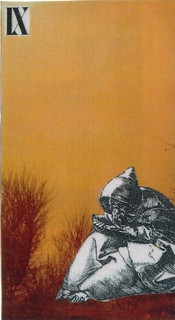 A remete
A remete 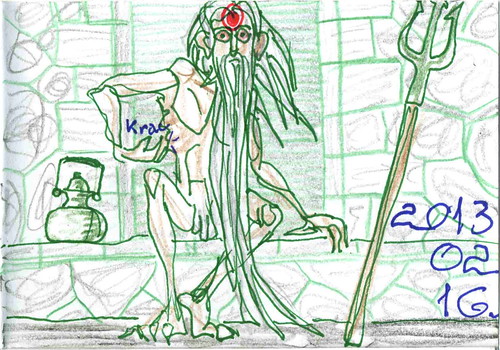 A remeték leginkább pucéran futkároznak. Legföljebb rongyokban. Mindenféle vacakjuk lehet, de ételhordót, papi kardot, nyakláncot és kéregető tányért jellemzően tartanak. Koszosak, soványak, ápolatlanok, hajukat-szakállukat-körmüket nem vágatják. Ugyanakkor testüket festik, legalább a homlokukat. Szemükben látszik a megszállottság őrült fénye. Hülyén viselkednek, hülye performanszokat tartanak, szeretnek részt venni hülye találkozón vagy értelmetlen zarándoklaton. A kapzsik városokban élősködnek, az aszkéták erdőkben vagy hegyekben halnak csendben éhen. Két remete nem fér meg sokáig egy helyen. Több remete sem fér meg sokáig egy helyen. Látványosan összeverekednek hamarosan, ezen jót lehet röhögni. Agyonveretés esetén ünnepélyes és ingyenes temetés jár az áldozatnak. Mindezek következtében – a papok kivételével – a nép tiszteli őket. Kapnak néha rendszeresen ajándékot, kaját. Tanácsot kérnek tőlük; adnak is, de annak nincs sok haszna, mert általában érthetetlen. Nemesek udvarában szívesen látják őket addig, míg el nem szemtelenednek. Szentelt helyeken csak akkor maradhatnak, ha megfürdenek és hajat mosnak. Ezért látni kevés remetét kolostorok vagy templomok környékén.
A remeték leginkább pucéran futkároznak. Legföljebb rongyokban. Mindenféle vacakjuk lehet, de ételhordót, papi kardot, nyakláncot és kéregető tányért jellemzően tartanak. Koszosak, soványak, ápolatlanok, hajukat-szakállukat-körmüket nem vágatják. Ugyanakkor testüket festik, legalább a homlokukat. Szemükben látszik a megszállottság őrült fénye. Hülyén viselkednek, hülye performanszokat tartanak, szeretnek részt venni hülye találkozón vagy értelmetlen zarándoklaton. A kapzsik városokban élősködnek, az aszkéták erdőkben vagy hegyekben halnak csendben éhen. Két remete nem fér meg sokáig egy helyen. Több remete sem fér meg sokáig egy helyen. Látványosan összeverekednek hamarosan, ezen jót lehet röhögni. Agyonveretés esetén ünnepélyes és ingyenes temetés jár az áldozatnak. Mindezek következtében – a papok kivételével – a nép tiszteli őket. Kapnak néha rendszeresen ajándékot, kaját. Tanácsot kérnek tőlük; adnak is, de annak nincs sok haszna, mert általában érthetetlen. Nemesek udvarában szívesen látják őket addig, míg el nem szemtelenednek. Szentelt helyeken csak akkor maradhatnak, ha megfürdenek és hajat mosnak. Ezért látni kevés remetét kolostorok vagy templomok környékén.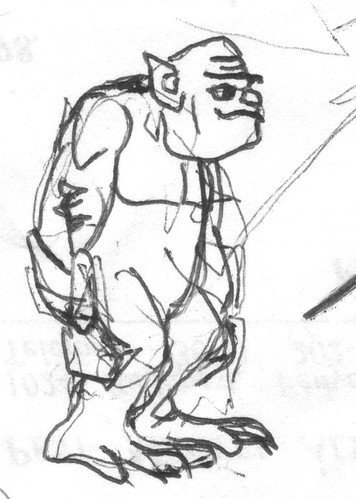 Az elfek néha beismerik, hogy valaha réges-régen egy törzsük elveszett. Azt viszont soha sem ismerik el, hogy a kb. 10 ezer éve megjelent orkok a rokonaik lennének. Az orkokat pedig nem érdekli a múlt (és a jövő). Mentalitásuk egész más: szerintük a tett halála az okoskodás. Saját kárukból nem tudnak tanulni, mert szinte minden balul végződő kísérlet a halálukat jelenti. Életkoruk egyébként is rövid. Viszont szaporák. Korábban évezredekig szimbiózisban éltek a növényvárosokkal, ennek következtében növényi tulajdonságokat vettek fel: bőrük zöld a klorofiltól, sebeik és elvesztett testrészeik gyorsan regenerálódnak, néha földet esznek a gyorsabb ásvány-fölvétel érdekében. Folyton nőnek, a kitepi, szetver és holafa tkp. életkort jelöl. Amikor a következő életcsoportba lépnek, egy sámán új nevet ad nekik, aztán ünnepséget rendeznek, aminek mindig verekedés a vége.
Az elfek néha beismerik, hogy valaha réges-régen egy törzsük elveszett. Azt viszont soha sem ismerik el, hogy a kb. 10 ezer éve megjelent orkok a rokonaik lennének. Az orkokat pedig nem érdekli a múlt (és a jövő). Mentalitásuk egész más: szerintük a tett halála az okoskodás. Saját kárukból nem tudnak tanulni, mert szinte minden balul végződő kísérlet a halálukat jelenti. Életkoruk egyébként is rövid. Viszont szaporák. Korábban évezredekig szimbiózisban éltek a növényvárosokkal, ennek következtében növényi tulajdonságokat vettek fel: bőrük zöld a klorofiltól, sebeik és elvesztett testrészeik gyorsan regenerálódnak, néha földet esznek a gyorsabb ásvány-fölvétel érdekében. Folyton nőnek, a kitepi, szetver és holafa tkp. életkort jelöl. Amikor a következő életcsoportba lépnek, egy sámán új nevet ad nekik, aztán ünnepséget rendeznek, aminek mindig verekedés a vége.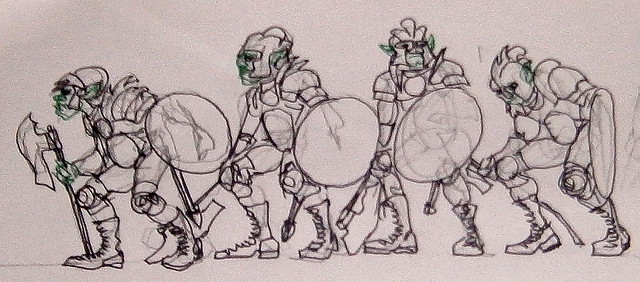
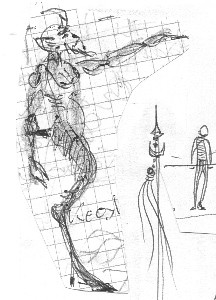

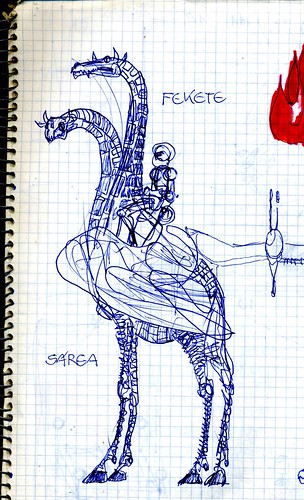 Bánatmocsár rejtettebb zugaiban költenek a zsirodilok. Gázló életmódot folytatnak. Negyedévenként továbbrepülnek, mert teljesen kipusztítják prédaállataikat.
Bánatmocsár rejtettebb zugaiban költenek a zsirodilok. Gázló életmódot folytatnak. Negyedévenként továbbrepülnek, mert teljesen kipusztítják prédaállataikat.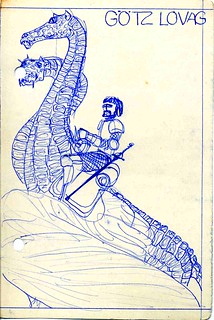 Eszményi hátasok gyakorlott lovagoknak. Megzabolázásukhoz a polipcsiga ajánlott, mely képes szimbiózisba lépni velük, és fel tudja fognia a lovag utasításait.
Eszményi hátasok gyakorlott lovagoknak. Megzabolázásukhoz a polipcsiga ajánlott, mely képes szimbiózisba lépni velük, és fel tudja fognia a lovag utasításait.

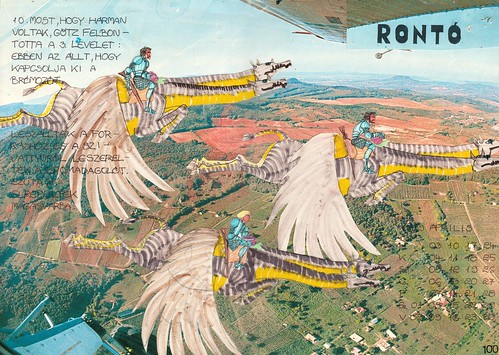
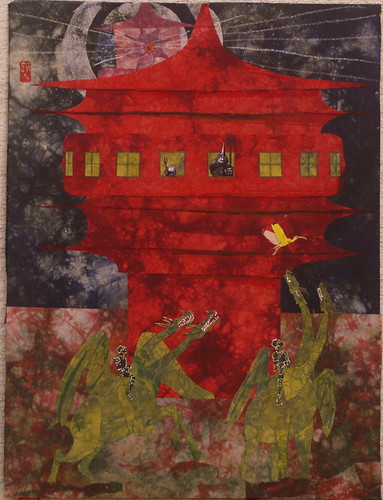
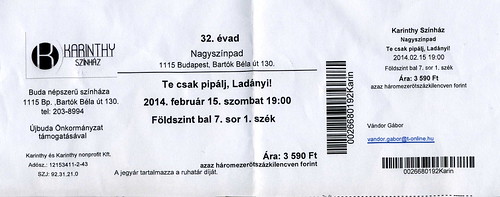 Először csak a jókról:
Először csak a jókról: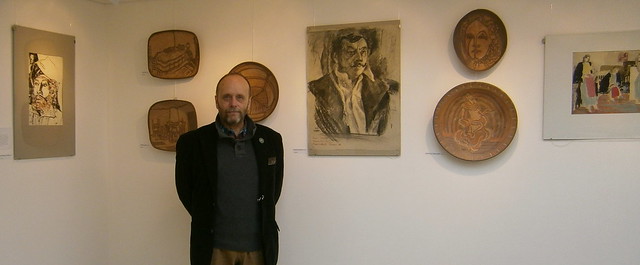

 A boly központi személye a királynő. Őt körülveszik tízes nagyságrendben a herék. A királynő irányítja a boly önszabályozó rendszerét a herék által, miközben folyamatosan közösül velük, vagy tolja ki magából a petéket.
A boly központi személye a királynő. Őt körülveszik tízes nagyságrendben a herék. A királynő irányítja a boly önszabályozó rendszerét a herék által, miközben folyamatosan közösül velük, vagy tolja ki magából a petéket. 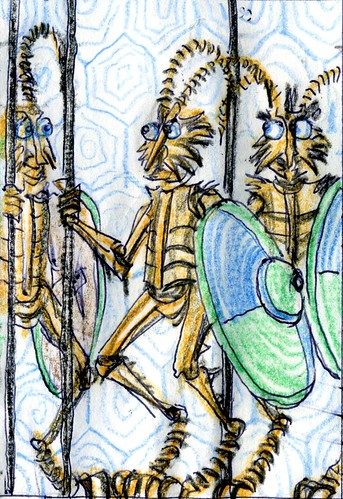 A bámelek tömegét a nemtelen dolgozók alkotják. 1,2 méter magasak átlagosan, és szárnyuk csökevényes. A királynő 2 méteres, ehhez jön a maga után vonszolt petezsák. Szárnya van és négy karja (a mintát Nacho Molina "Worls of Warcraft TCG: Throne of the tides" sorozatának naga kártyáiról vettem)
A bámelek tömegét a nemtelen dolgozók alkotják. 1,2 méter magasak átlagosan, és szárnyuk csökevényes. A királynő 2 méteres, ehhez jön a maga után vonszolt petezsák. Szárnya van és négy karja (a mintát Nacho Molina "Worls of Warcraft TCG: Throne of the tides" sorozatának naga kártyáiról vettem)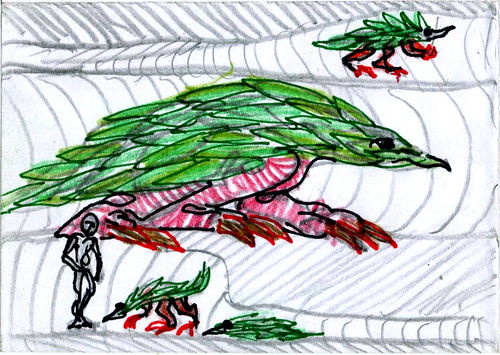 A kharatmal munkások száma legnagyobb a bolyban. Mint írtam, kutya méretűek. Csibor alakjuk van: hátukon lapátnyi pikkelyekkel. Hat lábuk nagyon erős, négy ujjban végződik. Az ujjak pedig ásókarmokban. Leginkább ásnak a boly földalatti részének bővítésére. A vájár kharatmal két lábával kicövekeli magát, a többivel pedig maga mögé hányja a kitermelt földet. A hátra zuhogó rögök alá állnak a szállító munkások. Háti pikkelyeiket fölmeresztik, ezzel nagyobb mennyiségű földet bírnak a hátukra pakolni. A teherrel inalnak a lerakodási vagy építési területre. Visszafelé a vájat plafonján jönnek, hogy a szállítást ne akadályozzák.
A kharatmal munkások száma legnagyobb a bolyban. Mint írtam, kutya méretűek. Csibor alakjuk van: hátukon lapátnyi pikkelyekkel. Hat lábuk nagyon erős, négy ujjban végződik. Az ujjak pedig ásókarmokban. Leginkább ásnak a boly földalatti részének bővítésére. A vájár kharatmal két lábával kicövekeli magát, a többivel pedig maga mögé hányja a kitermelt földet. A hátra zuhogó rögök alá állnak a szállító munkások. Háti pikkelyeiket fölmeresztik, ezzel nagyobb mennyiségű földet bírnak a hátukra pakolni. A teherrel inalnak a lerakodási vagy építési területre. Visszafelé a vájat plafonján jönnek, hogy a szállítást ne akadályozzák.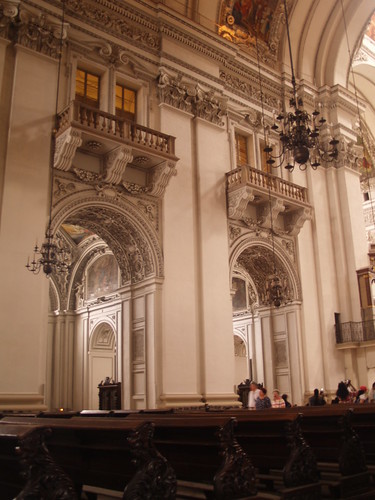 Általában egy nagy hodály, olyan, mint a barokk templom. Vagyis van egy beléptető előtér, egy földszinti tér a népnek, melyet erkélyen elhelyezkedő páholyok kerítenek több szinten. Belépő fölött a kórus. A nézőteret a zenekari árok választja el a színpadtól. A zenekari árok két oldalán van két nagyobb páholy, az egyik a főnöké, a másik az elöljáróságé. A színpad több rétegű minden irányban. Persze az egész tükrözi a környezet gazdasági helyzetét kialakításban és felszereltségben. A színház nem tévesztendő össze az arénával, majd arról is írok.
Általában egy nagy hodály, olyan, mint a barokk templom. Vagyis van egy beléptető előtér, egy földszinti tér a népnek, melyet erkélyen elhelyezkedő páholyok kerítenek több szinten. Belépő fölött a kórus. A nézőteret a zenekari árok választja el a színpadtól. A zenekari árok két oldalán van két nagyobb páholy, az egyik a főnöké, a másik az elöljáróságé. A színpad több rétegű minden irányban. Persze az egész tükrözi a környezet gazdasági helyzetét kialakításban és felszereltségben. A színház nem tévesztendő össze az arénával, majd arról is írok.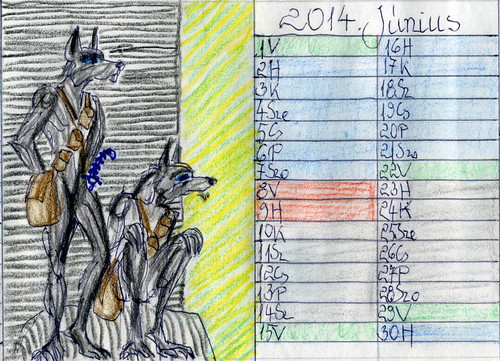
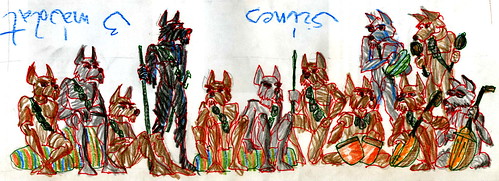
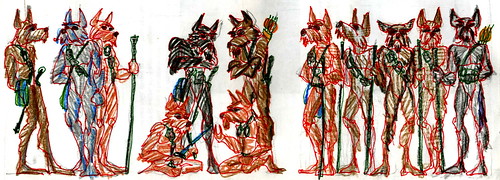
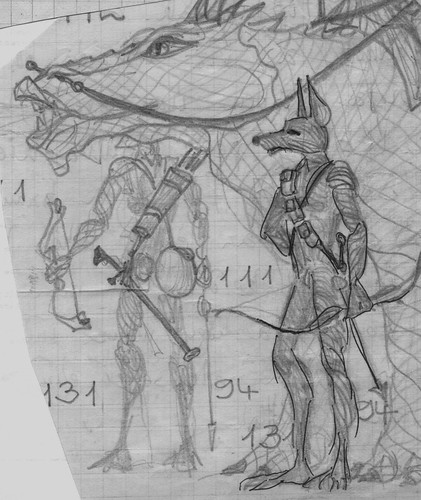
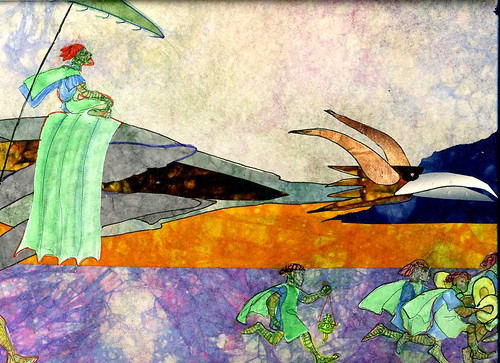
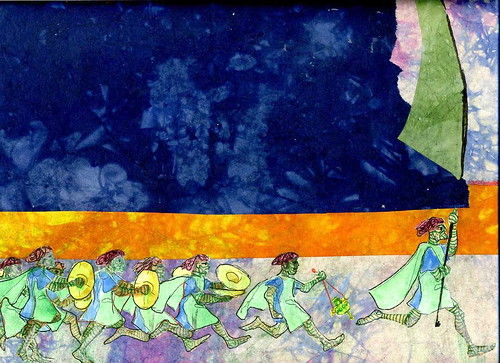
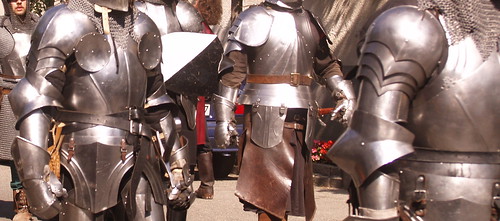

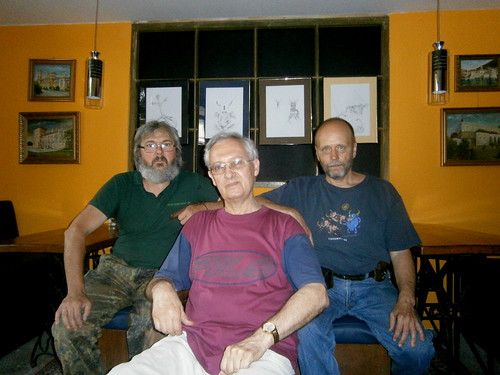
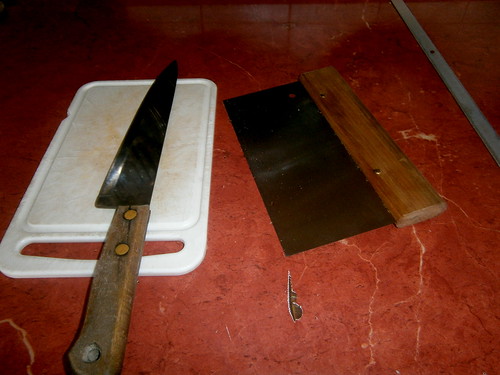

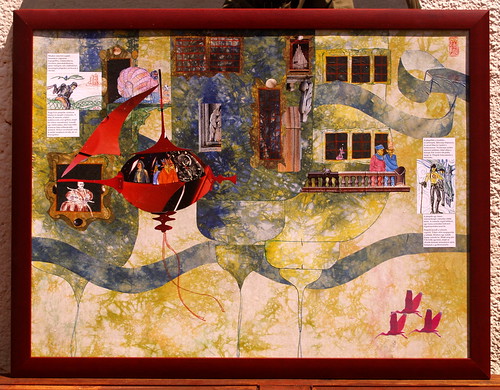
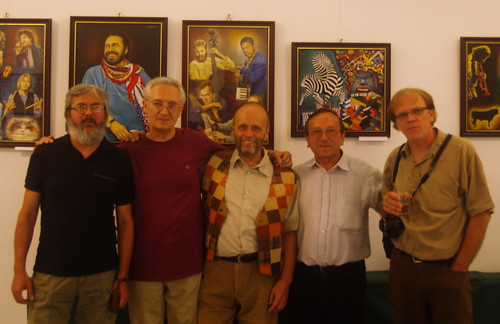
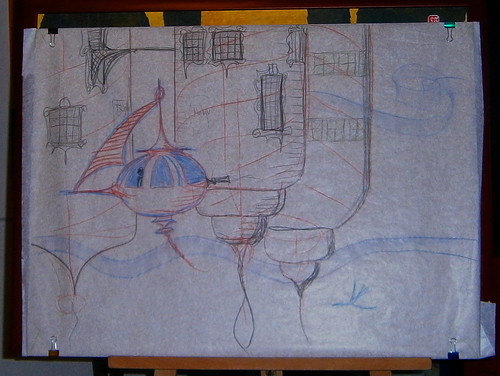

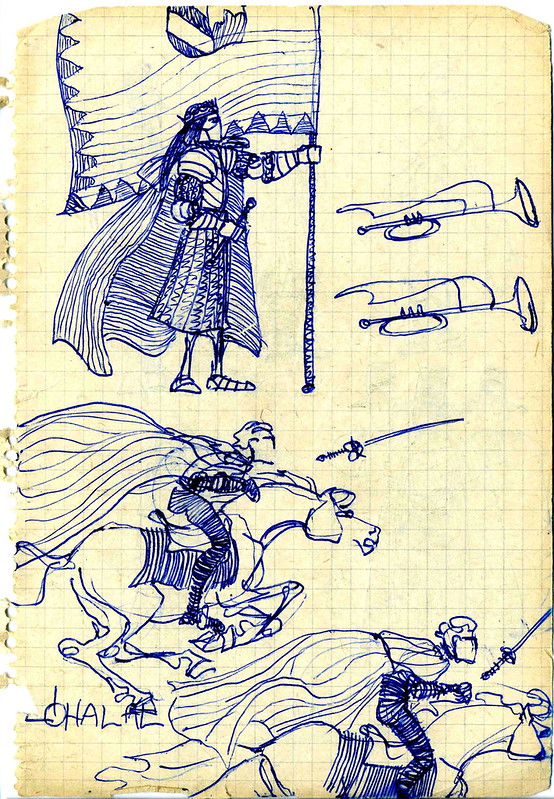
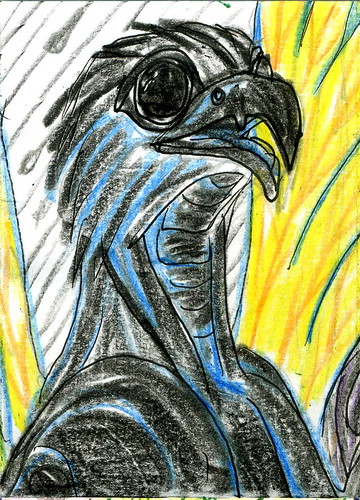
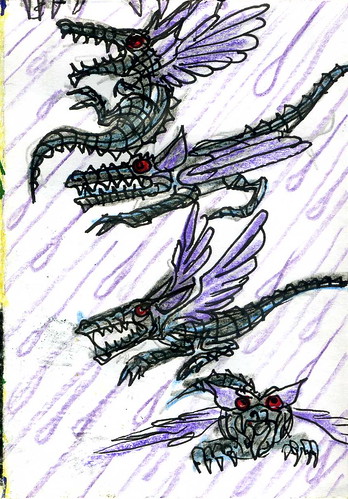

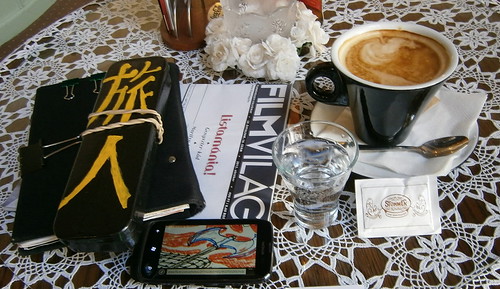

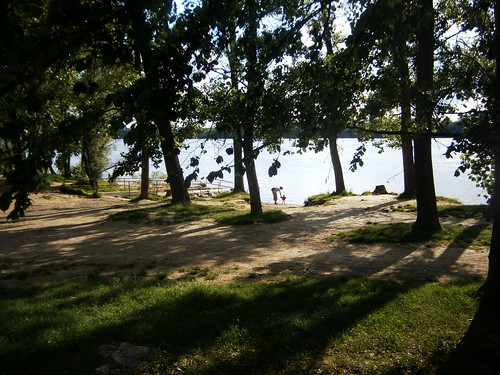
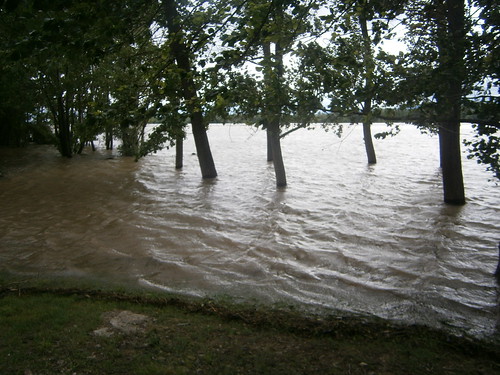
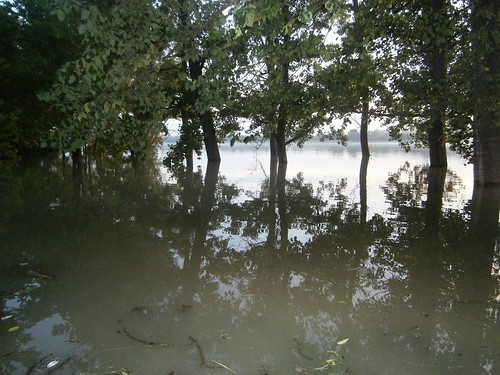

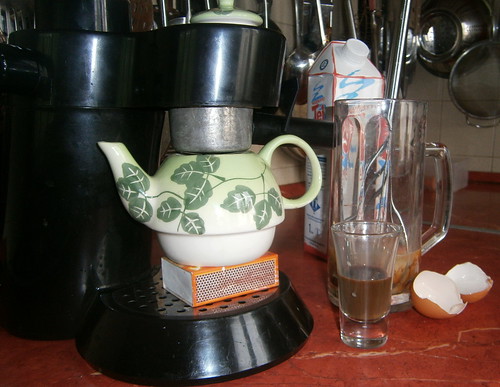
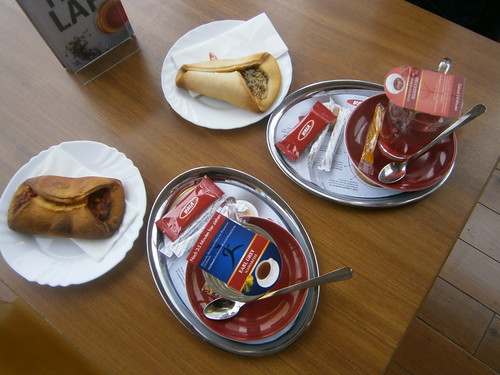
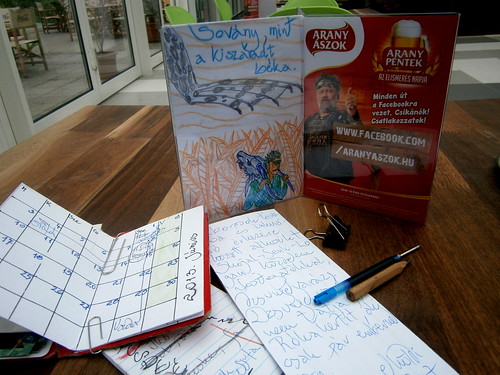

 Többi kép
Többi kép 